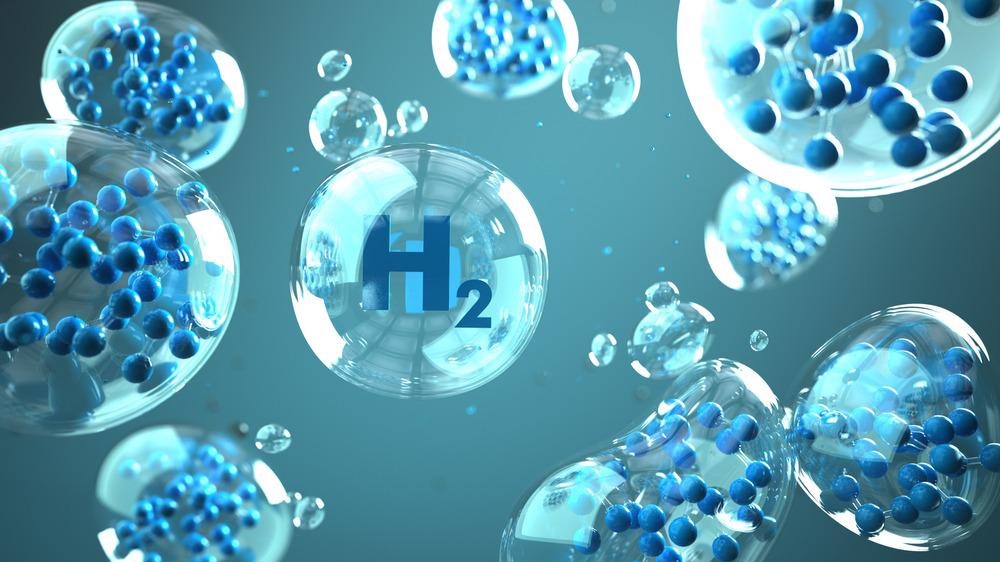Hydrogen energy can be produced through many different processes. The most common methods include thermochemical and electrochemical approaches.

Image Credit: Alexander Limback/Shutterstock.com
An Introduction to Hydrogen Energy
Due to the limited life span and negative environmental and health impacts associated with the use of fossil fuels, there has been an increased interest in the use of renewable energy sources such as hydrogen energy. Hydrogen energy is already widely used in the commercial production of liquid hydrocarbon fuels and synthetic chemicals through the Fischer-Tropsch catalysis method.
As compared with other renewable energy sources such as wind, solar, hydro, and geothermal energy that cannot produce liquid or gaseous transportation fuels, hydrogen energy can be stored as a gas or a liquid in a safe and efficient manner.
Another advantage associated with hydrogen energy is that it can be produced from steam reforming natural gas, as well as derived from several renewable sources, including lignocellulosic biomass or water splitting through the use of solar energy, as well as fossil fuels, microorganisms, biofuels, water, biomass, and alcohols.
Despite the wide range of sources that hydrogen energy can be derived from, approximately 96% of hydrogen energy currently in use today is produced from fossil fuels, whereas the remaining 4% originates from some of the above alternative sources.
Thermochemical Production of Hydrogen Energy
The thermochemical production of hydrogen energy, which is otherwise referred to as a thermochemical water cycle, is a multi-step process in which water is dissociated to produce both hydrogen and oxygen. This approach to hydrogen energy production requires high temperatures within the range of 500 °C to 2000 °C to stimulate the several reactions that are needed to acquire the final hydrogen product.
There are several different routes by which hydrogen energy can be produced through thermochemical methods; however, the most common thermochemical processes include natural gas reforming, which is otherwise known as steam methane reforming (SMR), biomass gasification, biomass-derived liquid reforming, and solar thermochemical hydrogen (STCH) production.
Steam methane reforming
The source of hydrogen energy in SMR is a methane source, the most common of which is natural gas. During this process, methane reacts with steam at a pressure between 3-25 bar pressure in the presence of a catalyst. This catalytic reaction leads to the production of hydrogen, carbon monoxide (CO), and a small amount of carbon dioxide (CO2).
Following this reaction, a water-gas shift reaction takes place, during which the CO reacts with the steam to produce CO2 and a greater amount of hydrogen. The final step of SMR is a pressure-swing adsorption step, during which CO2 and any other impurities that are produced during the previous reactions are removed from the gas stream to yield pure hydrogen energy as the final product.
SMR is currently the primary source of hydrogen energy worldwide. However, it is important to note that this method of hydrogen energy production is associated with a high global warming potential.
How to produce hydrogen efficiently? (PART 1) Discovering the fuel of the future - steam reforming
Video Credit: JAES Company/YouTube.com
Biomass gasification
Biomass gasification utilizes biomass as its source of hydrogen energy, which can originate from a wide range of sources, including agriculture crop residues, forest residues, organic municipal solid wastes, and animal wastes.
Typically, the biomass gasification process begins with the reaction of the biomass source with a controlled amount of oxygen or steam, which will lead to the production of CO, CO2, and hydrogen. The CO produced from this reaction will subsequently react with water to form more CO2 and hydrogen through a similar water-gas shift reaction that occurs during SMR.
When oxygen is not available, biomass can also undergo a reaction known as pyrolysis to produce hydrogen energy. Due to the lack of oxygen, the extra hydrocarbon compounds that are present within the gas mixture must be reformed through an additional catalytic reaction. This step is then followed by the shift reaction step, which ultimately converts CO to CO2 and hydrogen.
Electrochemical Production of Hydrogen Energy
As compared to thermochemical production methods that can be applied to produce hydrogen energy, most electrochemical hydrogen production methods have cost-scaling factors that enable their employment on a much smaller scale.
Another advantage of electrochemically producing hydrogen energy is that pure hydrogen is generated through this method, which is comparable to thermochemical production methods that often produce CO2, which is a leading contributor to climate change. The only impurity that can be produced from electrolytic hydrogen production is water, which can be easily and inexpensively removed.
In general, the electrochemical production of hydrogen energy utilizes both an anode and cathode that are separated by an electrolyte that is either solid or liquid. Several different electrolyzers can be used, some of which include a polymer electrolyte membrane (PEM) electrolyzer, alkaline electrolyzer, and solid oxide electrolyzer.
The primary role of the electrolyzer is to facilitate the movement of ions within the electrodes while excess electrons are simultaneously transported through an external circuit that supplies electrical energy to the fuel cell.
References and Further Reading
Hydrogen Production Processes [Online]. Available from: https://www.energy.gov/eere/fuelcells/hydrogen-production-processes.
Hydrogen Fuel Basics [Online]. Available from: https://www.energy.gov/eere/fuelcells/hydrogen-fuel-basics
Tarhan, C., & Cil, M. A. (2021) A study on hydrogen, the clean energy of the future: Hydrogen storage methods. Journal of Energy Storage 40. doi:10.1016/j.est.2021.102676.
Okolie, J. A., Patra, B. R., Mukherjee, A., et al. (2021) Futuristic applications of hydrogen in energy, biorefining, aerospace, pharmaceuticals and metallurgy. International Journal of Hydrogen Energy 46(13); 8885-8905. doi:10.1016/j.ijhydrene.2021.01.014.
Hydrogen Production: Natural Gas Reforming [Online]. Available from: https://www.energy.gov/eere/fuelcells/hydrogen-production-natural-gas-reforming.
Safari, F., & Dincer, I. (2020) A review and comparative evaluation of thermochemical water splitting cycles for hydrogen production. Energy Conversion and Management 205. doi:10.1016/j.enconman.2019.112182.
Hydrogen Production: Biomass Gasification [Online]. Available from: https://www.energy.gov/eere/fuelcells/hydrogen-production-biomass-gasification.
Disclaimer: The views expressed here are those of the author expressed in their private capacity and do not necessarily represent the views of AZoM.com Limited T/A AZoNetwork the owner and operator of this website. This disclaimer forms part of the Terms and conditions of use of this website.